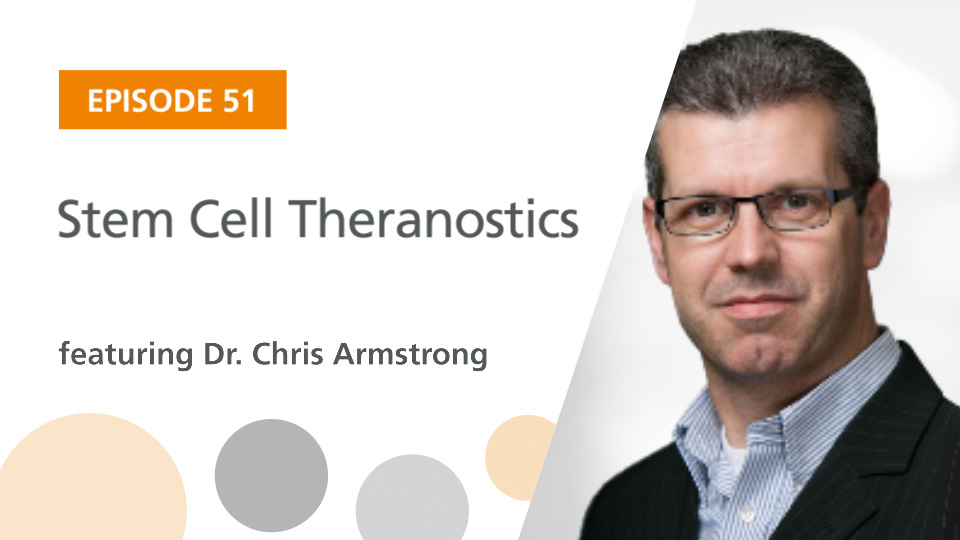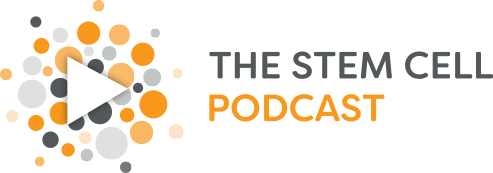
Podcast: Play in new window
Guest:
Dr. Chris Armstrong, CEO of Stem Cell Theranostics, joins the hosts to discuss his company and how they are using iPSCs to model cardiovascular disease.
Resources and Links
Elusive Liver Stem Cell Identified in Mice by Researchers – Researchers at the Stanford University School of Medicine identified a cell type in the liver of mice that can both self-renew and make new liver cells.
Can Crime Scene Compound Stop Malaria? – Luminol, the glowing compound detectives spray at crime scenes to find trace amounts of blood, may one day be used to kill the malaria parasite.
Anti-Smoking Bacteria Found to Eat Nicotine – Scientists discovered anti-smoking bacteria called Pseudomas putida that eat nicotine before it reaches the brain.
How To Reach ‘Extreme Old Age’: Scientists Reveal the Secret of Living to 100 Years Old – There is a good chance centenarians and super-centenarians – those who live to 105 and longer – will pass on their ‘long life’ genes on to their children.
Non-Magnetic Metals Turned Magnetic in Groundbreaking Research – A team of scientists led by the University of Leeds has been able to turn the non-magnetic materials manganese and copper magnetic.
Study Offers First Genetic Analysis of People with Extremely High Intelligence – The first ever genetic analysis of people with extremely high intelligence has revealed small but important genetic differences between some of the brightest people in the United States and the general population.
3D Brain Map Reveals Connections Between Cells in Nano-Scale – Scientists have created an unprecedented high-resolution map of the brain that reveals structures as small as those found in individual nerve cells.
Stem Cells Help Researchers Determine Toxicity of Pollution – The effects of BPA on mouse stem cells could be detected and measured in lab tests by researchers.
MicroRNA-153 Regulates the Acquisition of Gliogenic Competence by Neural Stem Cells – This article shows that miR-mediated fine control of nuclear factor I A/B expression is important in the molecular networks that regulate the acquisition of gliogenic competence by neural stem/progenitor cells in the developing CNS.
Activating Endogenous Neural Precursor Cells Using Metformin Leads to Neural Repair and Functional Recovery in a Model of Childhood Brain Injury – Metformin activates endogenous neural precursor cells in the neonatal brain.
A Quantitative Proteomic Analysis of Hemogenic Endothelium Reveals Differential Regulation of Hematopoiesis by SOX17 – This article states that proteomics accurately identifies regulatory proteins in hematopoietic progenitors.
Genome Editing. The Mutagenic Chain Reaction: A Method For Converting Heterozygous To Homozygous Mutations – In this article, researchers developed a method called the mutagenic chain reaction, which is based on the CRISPR/Cas9 genome-editing system for generating autocatalytic mutations, to produce homozygous loss-of-function mutations.
Caution Urged over Editing DNA in Wildlife (Intentionally Or Not) – This article discusses the effects of rapid alteration of gene pools which could fight disease but can harm ecosystems.
Automated, High-Throughput Derivation, Characterization And Differentiation of Induced Pluripotent Stem Cells – Researchers demonstrate that automated reprogramming and the pooled selection of polyclonal pluripotent cells results in high-quality, stable induced pluripotent stem cells.
Prediction Of Drug-Induced Nephrotoxicity and Injury Mechanisms with Human Induced Pluripotent Stem Cell-Derived Cells and Machine Learning Methods – This article describes how the researchers developed a rapid 1-step protocol for the differentiation of human induced pluripotent stem cells into proximal tubular-like cells.
Photo Reference: Courtesy of Dr. Chris Armstrong

